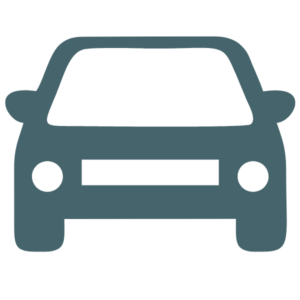 An article in Business Insider had an attention-grabbing title: “McDonalds and Chick-fil-A are tracking your location to make sure your fries are perfectly crispy when you come to collect your mobile order”1. It was written in May of 2023 – is this still true? Did it fly? What mobile food apps use tracking and should I be concerned? All legitimate questions – and this it seems only scratches the surface.
An article in Business Insider had an attention-grabbing title: “McDonalds and Chick-fil-A are tracking your location to make sure your fries are perfectly crispy when you come to collect your mobile order”1. It was written in May of 2023 – is this still true? Did it fly? What mobile food apps use tracking and should I be concerned? All legitimate questions – and this it seems only scratches the surface.
What is Geofencing?
Geofencing is the use of GPS or RFID technology to create a geographic boundary enabling software to trigger a response when a mobile device enters a particular area. Restaurants are using this technology to “elevate customer experience, reduce waste and personalize interactions”2 It allows the restaurant to track a person through the downloaded app where the person has allowed location services. Primarily, it helps locate the customer when an order is placed online so that once the person is a few minutes away, the kitchen can get an alert to prepare the order. The food is then fresh and hot when the customer comes to pick up, allowing for happier customers, less food waste due to subpar cold food or melted ice, and the standards of the restaurant stay high while meeting the customers’ expectations.
Who uses Geofencing?
But there are other reasons for a restaurant to employ geofencing. If a customer is driving by the competition, a text message can be sent with a special coupon to divert their attention from the establishment. Or, in terms of advertising on social media, when a customer is in a specific area set by geofencing, specific ads can pop up and appear on their social media feed.
Several brands use geofencing including McDonalds, Chik-fil-A, Starbucks, and Taco Bell. Typically, quick service restaurants (QSRs) that serve fast food and limited dine in options. In December it was announced that McDonalds is expanding its “Ready on Arrival” pilot to its top six markets by 2025. In addition to the benefits mentioned above, the company has reported reduced wait times and more satisfied customers.3
Restaurants aren’t the only companies to use geofencing. Johns Hopkins University Hospital uses geofencing as a marketing tool for job openings.4 And Uber, if you agree to have your location services turned on when you’re not using the app, will send notifications if you enter into one of the designated areas as a way to market and drive more sales.
Are you tracked?
So – yes, a year after the article about tracking was written, it is still true, we are seeing it more and more as companies are seeing the benefits in their marketing efforts. And as AI continues to be developed, geofencing will become more complex using collected data for predictive analytics to develop strategy for inventory management, staffing and increased customer satisfaction.
Not keen on the idea of being tracked? There are some easy phone fixes to help prevent your phone from sharing your location:
- Use VPN with ad blocker and antivirus software
- Avoid public WiFi and disable automatic WiFi connection
- Turn off GPS and Bluetooth
- Use airplane mode
- Keep your phone updates
- Avoid suspicious apps
- Be careful with app permissions
- Disable personalized ads
- Disable cross-site tracking
References
- Dean, G. (2023, May 29) “McDonalds and Chick-fil-A are tracking your location to make sure your fries are perfectly crispy when you come to collect your mobile order” Business Insider https://www.businessinsider.com/mcdonalds-chick-fil-a-apps-track-location-restaurant-mobile-order-2023-5?utm_campaign=business-sf&utm_source=twitter&utm_medium=social
- Vinnedge, M. (2024, March 24) “Geofencing: Secret Weapon of Fast Food Franchising” Franchisewire https://www.franchisewire.com/geofencing-secret-weapon-of-fast-food-franchising/
- Beckett, E. (2023, December 11) “McDonald’s doubles down on Geofencing” Yahoo! Finance https://finance.yahoo.com/news/mcdonald-doubles-down-geofencing-130527795.html
- Storm, M. “Geofencing Examples: 5 Examples of Geofencing Done Right” WebFX Blog https://www.webfx.com/blog/marketing/geofencing-examples/



